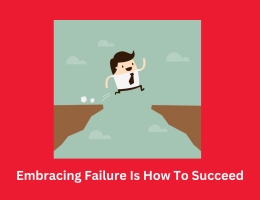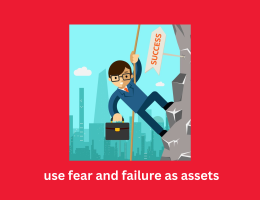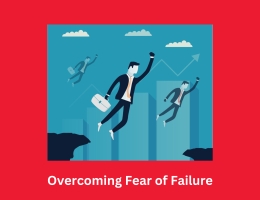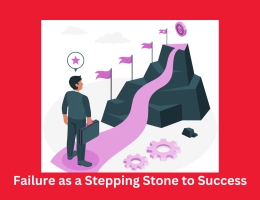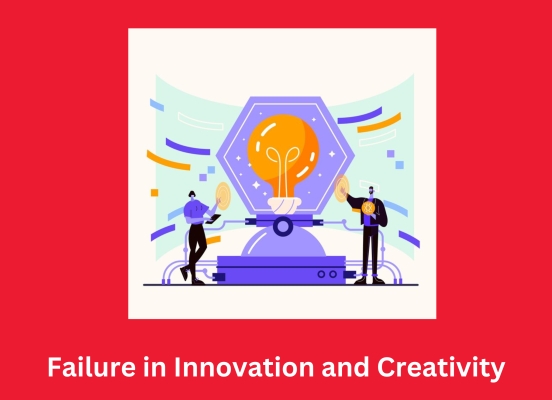
Failure in Innovation and Creativity: Fostering a Culture of Experimentation
- By admin --
- Sunday, 17 Mar, 2024
Introduction:
Progress and increase in all spheres of society are propelled by means of using innovation and creativity. But the concern of failing regularly stands within the way of innovation. Because of the capability repercussions of failure, many human beings and agencies are afraid to take chances and try new matters. On the other hand, seeing failure as an essential step within the innovative technique may inspire an experimental way of life that subsequently effects in success and stimulates innovation and education. This article highlights the significance of fostering the sort of subculture and examines how experimenting with new strategies and stories may aid businesses in turning into greater imaginitive and innovative.
Understanding Failure in Innovation:
Failure is an essential component of the creative process. Through experimentation and technological advancements, new ideas are generated, refined, and eventually come to pass. However, fear of failure can also keep someone from being innovative or willing to take chances.
People and corporations are tons an awful lot much less inclined to analyze novel requirements or question the recognition quo at the same time as they're afraid of failing.
Moreover, failure is not always viewed as a positive or productive outcome. In conventional corporate cultures, failure is often interpreted as a sign for irresponsibility or incompetence. This way of wondering is restrictive of creativity and prevents people from experimenting and this is why it isn't revolutionary.
Fostering a Culture of Experimentation:
Organisations need to see experimenting as a essential part of their identification in the event that they need to foster a creative culture and triumph over fear of failure. This means creating an environment that encourages people to try new things, take risks, and learn from their mistakes.
1.Encourage Risk-Taking:
Urge individuals to take advantage of fresh chances and domesticate a ambitious mind-set with out giving an excessive amount of thought to unfavorable effects or backlash. Promote experimentation by providing resources and support, and recognise successes and failures as opportunities for growth. Organisations may stimulate creativity and spark innovation by cultivating a culture that rewards taking risks.
2.Embrace Failure as a Learning Opportunity:
Shift the narrative surrounding failure from one of shame and blame to one of learning and growth. Urge others to consider what went wrong, what can be learnt from it, and how they might use this knowledge in future attempts. Organisations may additionally foster a safe environment for experimentation and creativity by way of redefining failure as a essential and useful issue of the innovation system.
3.Promote Collaboration and Diverse Perspectives:
Bringing together people with various backgrounds, experiences, and viewpoints will promote cooperation and variety of thinking. Organisations might also provide a greater range of ideas and strategies to hassle-fixing via accepting a variety of critiques. This series works to debunk stereotypes and promote an environment that is accepting of diversity, which will in turn ignite creativity and innovation.
4.Provide Resources and Support:
Provide individuals with the resources, tools, and support they need to pursue their ideas and experiments. This could involve facilitating financial aid or grants, offering time devoted solely to comprehensive understanding of subjects, and opening up career development opportunities. Investing in new ways of doing things and giving infrastructure that is supportive will enable employees to be more daring and creative beyond common practicesächst.
Case Studies and Examples:
5.Google's "Fail Fast, Fail Often" Culture:
Google is thought for its modern and experimental way of life, which inspires personnel to take risks and pursue ambitious thoughts. The business enterprise's famous motto, "Fail Fast, Fail Often," underscores the importance of experimentation and getting to know from failure. Google's willingness to embrace failure has brought about severa breakthroughs, inclusive of Gmail, Google Maps, and Google Glass.
6.3M's Innovation Imperative:
3M is another company that prioritizes experimentation and innovation. The company's "15% rule" allows employees to spend a portion of their time pursuing passion projects and experimenting with new ideas. This culture of innovation has led to iconic products such as Post-it Notes and Scotchgard, demonstrating the value of fostering a culture of experimentation.
Conclusion:
Failure is an inherent part of the innovation process, yet it is often feared and avoided. By fostering a culture of experimentation that embraces risk-taking, organizations can unlock the full potential of their employees and drive creativity and innovation. By encouraging individuals to take risks, learn from failure, and collaborate with diverse perspectives, organizations can create an environment where innovation thrives and success flourishes.

